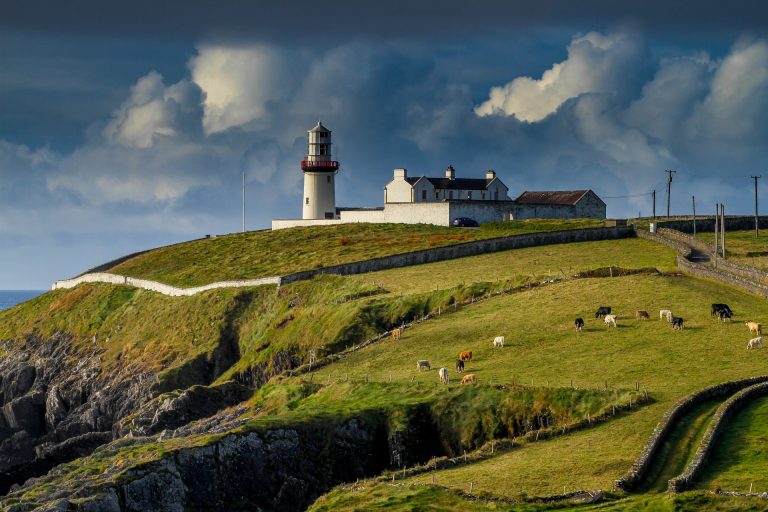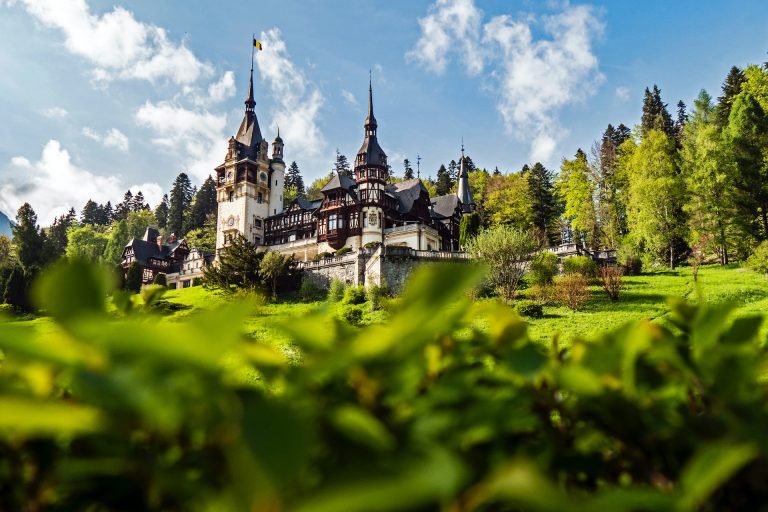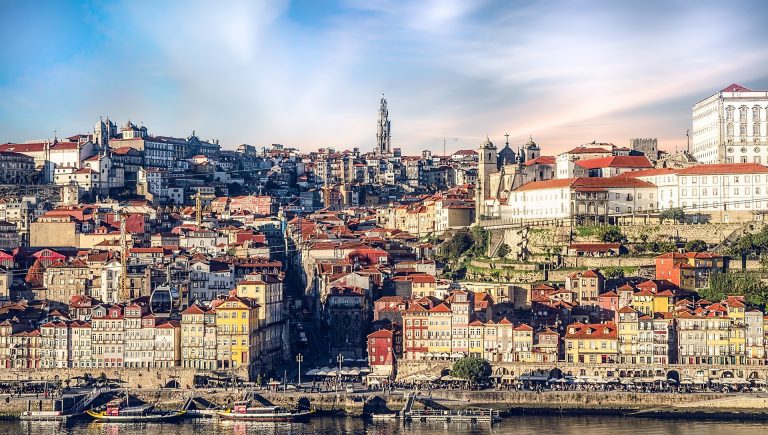SPAIN Travel Guide for 2024: Discover the Beauty of Spain

Welcome to our comprehensive Spain travel guide!
Spain, located on the beautiful Iberian Peninsula, is a country that boasts a rich history, diverse culture, and breathtaking landscapes. From vibrant cities like Madrid and Barcelona to charming coastal towns and picturesque countryside, Spain offers something for every traveler’s taste.
In this Spain travel guide, we’ll delve into fast facts about Spain, the best time to visit, top attractions, culinary delights, and souvenir ideas to bring a piece of Spain home with you.
What to See and Do in Spain
Whether you’re an experienced Spanish traveler out to explore some of the most beautiful cities in Spain or someone setting foot here for the first time, there’s never a shortage of things to do or sights to see. Here are the best places to visit in Spain for first-timers.
- Madrid. Begin your journey in the vibrant capital of Madrid, where you can explore world-class museums like the Prado Museum, stroll through the beautiful Retiro Park, and indulge in delicious tapas at lively markets.

- Barcelona. Immerse yourself in the architectural wonders of Barcelona, from the awe-inspiring Sagrada Familia to the whimsical Park Güell designed by Antoni Gaudí. Don’t miss the charming Gothic Quarter, with its narrow streets and hidden squares.

- Seville. Visit the enchanting city of Seville, where the iconic Plaza de España and the colossal Seville Cathedral await. Experience the passionate flamenco performances and wander through the charming neighborhoods of Santa Cruz and Triana.

- Granada. Journey to Granada to witness the magnificent Alhambra, a UNESCO World Heritage site. Explore its intricate Moorish palaces and stunning gardens, and be sure to savor the city’s famous tapas culture.

- Coastal Spain. For sun-seekers, the coastal regions of Costa del Sol, Costa Brava, and the Balearic Islands offer idyllic beaches and crystal-clear waters. Ibiza is renowned for its vibrant nightlife, while Mallorca and Menorca boast picturesque coves and charming villages.

- Basque Country. Venture north to the breathtaking landscapes of the Basque Country, where you can explore the dynamic city of Bilbao and its iconic Guggenheim Museum. Indulge in the world-renowned pintxos (Basque tapas) and admire the rugged beauty of San Sebastian.

- Outdoor enthusiasts will be captivated by the hiking trails of the Picos de Europa and the Camino de Santiago pilgrimage route. The Canary Islands offer diverse landscapes, from volcanic terrain in Lanzarote to lush forests in La Palma.

For a cultural adventure tour in Spain, check out our post: BEST OF SPAIN: A Cultural Adventure Tour
BEST OF SPAIN: A Cultural Adventure Tour
Fast Facts About Spain
- Spain enjoys a Mediterranean climate, with hot summers and mild winters. Coastal areas have more moderate temperatures, while inland regions experience greater temperature fluctuations.
- The local currency in Spain is the Euro (€). It’s advisable to have some cash on hand, although credit cards are widely accepted in most establishments.
- The standard power voltage in Spain is 220-240V, and the outlets generally require two-pin plugs. It’s recommended to carry a universal adapter if your devices use different plug types.
- The official language spoken in Spain is Spanish, or Castilian. However, in certain regions, like Catalonia and the Basque Country, you may also encounter other languages, such as Catalan and Basque.
- Spain is known for its religious diversity, but the majority of the population identifies as Roman Catholic. Visitors are welcome to explore the rich religious heritage, but it’s important to respect religious sites and traditions.
- Spain is considered a safe country for travelers, but like any destination, it’s advisable to take precautions. Keep an eye on your belongings in crowded areas, and be aware of common tourist scams.
- Spanish people value politeness and courtesy. When interacting with locals, a simple “Hola” (hello) or “Gracias” (thank you) goes a long way. It’s also customary to greet with a handshake or a kiss on the cheek, depending on the region.
- Tipping in Spain is not mandatory, but it’s appreciated for good service. A 10% tip is generally considered generous, and it’s customary to leave the tip in cash directly to the server.
When to Visit Spain: Seasons and Festivals
Here’s a breakdown of the seasons and notable festivals to consider when you plan a trip to Spain:
- Spain offers diverse experiences throughout the year, so the best time to visit depends on your preferences. Summer (June to August) is ideal for beach lovers, as the coastal areas enjoy warm temperatures and vibrant seaside atmospheres.
- Spring (March to May) and autumn (September to November) bring pleasant weather, making it an excellent time for city explorations and outdoor activities. The crowds are generally smaller during these seasons, allowing you to enjoy the attractions more comfortably.
- Winter (December to February) is a great time to visit if you’re interested in skiing or winter sports. The Pyrenees and Sierra Nevada mountains offer fantastic slopes and breathtaking landscapes.
- Spain is renowned for its lively festivals that showcase its rich cultural heritage. The Running of the Bulls (San Fermín) in Pamplona takes place from July 6th to 14th, where participants run alongside bulls through the streets. La Tomatina, a massive tomato fight, happens on the last Wednesday of August in Buñol, Valencia. Semana Santa (Holy Week) is a significant religious celebration held during the week before Easter, featuring processions and elaborate floats in cities like Seville and Malaga.
For an adventure Festival Tour in Spain, check out our post: FEAST OF SAN FERMIN Festival Adventure Tour: A Bucket-List Experience
FEAST OF SAN FERMIN Festival Adventure Tour: A Bucket-List Experience
How to Get Around Spain
Getting around Spain is relatively easy, with various transportation options available to suit your preferences and budget. Here are the best ways to get around to consider when planning your Spain trip:
- Spain has an efficient and extensive transportation network that makes exploring the country a breeze. The high-speed train, known as the AVE, connects major cities, providing a comfortable and convenient mode of transportation.
- Domestic flights are also available and are particularly useful for covering long distances or reaching the Canary Islands. Airlines like Iberia and Vueling offer regular flights between major cities.
- Buses are a popular and affordable option for traveling within Spain, with extensive routes that reach even the smallest towns. Companies like ALSA and Avanza provide reliable bus services with comfortable amenities.
- Metro systems are available in major cities like Madrid, Barcelona, and Valencia, offering a convenient way to navigate urban areas. These metros are efficient, clean, and well-connected to the city’s attractions and neighborhoods.
- Taxis are widely available, especially in urban areas. They can be hailed on the street or found at designated taxi ranks. Ride-hailing services like Uber and Cabify are also operational in major cities.
- Renting a car is a great option for exploring rural areas and scenic routes. Spain has a well-maintained road network, and car rental companies are readily available. Keep in mind that parking in city centers can be challenging, so plan accordingly.
- Cycling is a popular choice in cities like Barcelona and Seville, where bike lanes and rental services are widely available. It’s a fantastic way to explore the city’s landmarks and enjoy the local atmosphere.
- Walking is highly recommended for discovering the charming streets and neighborhoods of Spanish cities. Many attractions are within walking distance of each other, and it allows you to immerse yourself in the vibrant ambiance and architectural beauty.
Where to Stay in Spain: Accommodation Tips
When it comes to finding the perfect accommodation during your Spain trip, there are plenty of options to suit every budget and preference. Here are some valuable tips to ensure a comfortable and enjoyable stay:
- Hotels: Spain offers a plethora of hotels, ranging from luxurious resorts to charming boutique establishments. Popular hotel chains like Paradores and NH Hotels are known for their excellent service and comfortable accommodations. Consider booking directly through hotel websites or reputable online travel agencies to find the best deals.
- Guesthouses and Bed and Breakfasts: If you’re seeking a more intimate and personalized experience, consider staying at a guesthouse or bed and breakfast. These accommodations often provide a cozy atmosphere, homemade breakfast, and local insights from the hosts. Websites like Airbnb and Booking.com are great resources for finding these hidden gems.
- Hostels: Anyone backpacking in Spain would be pleased with this country’s impressive network of hostels geared towards budget-conscious explorers. Hostels offer affordable dormitory-style rooms or private rooms, along with common areas to socialize and meet fellow travelers. Websites like Hostelworld and Booking.com have extensive listings and user reviews to help you choose the right hostel for your needs.
- Camping: If you’re willing to embrace the outdoors and looking for an adventurous, budget-friendly experience while backpacking in Spain, then try camping in Spain (cámping in Spanish). Spain has an incredible number of campsites across its regions — from coastal sites offering turquoise sea views to mountainous areas that welcome you with breathtaking landscapes. For booking, platforms such as Pitchup and Campingsonline are extremely helpful.
- Vacation Rentals: If you prefer the comforts of a home away from home, consider renting a vacation apartment or villa. Websites like HomeAway and Airbnb offer a variety of options, ranging from city apartments to beachfront villas. This option is ideal for families or larger groups, as it provides more space and the convenience of a kitchen.
- Paradores: For a truly unique experience, consider staying at a Parador. These are historic buildings, such as castles, monasteries, and palaces, converted into luxury hotels. Paradores are scattered across Spain and offer a combination of history, elegance, and breathtaking surroundings.
Spain Travel Guide: Money-Saving Tips
Here are some practical money-saving tips to help you make the most of your budget during your Spain travel adventure:
- Off-Season Travel: Consider visiting Spain during the shoulder seasons of spring (March to May) and autumn (September to November). During these times, you’ll experience pleasant weather, fewer crowds, and lower prices on flights and accommodations.
- Free Attractions: Spain is home to numerous free attractions that showcase its rich culture and history. Take advantage of free entry days at popular museums like the Prado Museum in Madrid or the Picasso Museum in Barcelona. Explore charming neighborhoods, public parks, and vibrant markets without spending a dime.
- Tapas Culture: Embrace the Spanish tradition of tapas. Many bars and restaurants offer free tapas with the purchase of a drink, allowing you to sample a variety of local flavors at a reasonable price. Look for “Menu del Día” options, which offer fixed-price meals that include multiple courses.
- Local Markets: Visit local markets like Mercado de San Miguel in Madrid or Mercado de la Boqueria in Barcelona. These markets are not only a feast for the senses but also a great place to grab fresh produce, snacks, and affordable meals. Immerse yourself in the local food culture while supporting small vendors.
- Public Transportation: Opt for public transportation whenever possible. Spain has an efficient and well-connected network of buses, trains, and metros. Invest in a transportation card or ticket pass to save money on multiple journeys. Walking is also a fantastic way to explore Spanish cities and enjoy the sights along the way.
- Water and Snacks: Stay hydrated by carrying a refillable water bottle and filling it up at public fountains or restaurants that offer free tap water. Pack some snacks for long journeys or day trips to avoid overspending on food.
What Food to Tray in Spain: Traditional Cuisine
Spanish cuisine is a fusion of flavors. Here’s a Spain travel guide to the culinary delights and traditional dishes you must try during your visit:
- Tapas: Tapas culture is an integral part of Spanish cuisine. These small, flavorful plates are perfect for sharing and exploring a variety of dishes. Indulge in classics like patatas bravas (spicy potatoes), gambas al ajillo (garlic shrimp), tortilla española (Spanish omelet), and boquerones (marinated anchovies).
- Paella: A symbol of Spanish cuisine, paella is a must-try dish. This flavorful rice dish is often made with a variety of ingredients, such as saffron, vegetables, chicken, rabbit, and seafood. The coastal regions of Valencia and Alicante are famous for their authentic paella.
- Jamón Ibérico: Spain is renowned for its cured ham, particularly Jamón Ibérico. Made from acorn-fed Iberian pigs, this delicacy boasts a rich, savory flavor and a melt-in-your-mouth texture. Enjoy it thinly sliced as a tapa or in a bocadillo (sandwich).
- Seafood: With its long coastline, Spain offers an abundance of fresh and delectable seafood. Feast on grilled sardines, pulpo a la gallega (Galician-style octopus), gambas al ajillo (garlic shrimp), and mariscada (seafood platter). Coastal towns like Galicia, Andalusia, and Catalonia are known for their exceptional seafood dishes.
- Churros and Chocolate: Treat yourself to the classic Spanish breakfast or snack of churros con chocolate. These deep-fried dough pastries, dusted with sugar, are best enjoyed dipped in thick, rich hot chocolate. Head to a traditional churrería for an authentic experience.
- Sangria and Tinto de Verano: Quench your thirst with refreshing Spanish beverages. Sangria, made with red wine, fruit, and spices, is a popular choice. Alternatively, try Tinto de Verano, a refreshing blend of red wine and soda, perfect for warm summer days.
- Pintxos: Originating from the Basque Country, pintxos are bite-sized snacks served on bread and secured with toothpicks. These culinary creations can be found in bars across Spain, particularly in San Sebastian. Discover a delightful array of toppings, including cured meats, seafood, and cheeses.
- Gazpacho: Cool down with gazpacho, a chilled tomato-based soup. This refreshing dish is perfect for hot summer days. Made with fresh tomatoes, cucumbers, peppers, onions, garlic, olive oil, and vinegar, gazpacho bursts with flavors and is a healthy option.
What to Bring from Spain: Souvenir Ideas
Bringing home a piece of Spain is a wonderful way to cherish your Spain travel memories:
- Spanish Fans: Elegant and practical, Spanish fans make for a beautiful and traditional souvenir. Look for hand-painted fans crafted from wood and fabric, adorned with intricate designs or scenes from Spanish folklore.
- Flamenco Accessories: Embrace the passion of flamenco by bringing home flamenco accessories. Consider flamenco castanets, a traditional Spanish percussion instrument, or a colorful flamenco shawl to add a touch of Spanish flair to your wardrobe.
- Ceramic Tiles: Spain is famous for its vibrant ceramic tiles, often featuring intricate patterns and designs. Look for hand-painted ceramic tiles that can be displayed as wall art or used as coasters, trivets, or decorative accents.
- Spanish Wine and Olive Oil: Spain is renowned for its wine and olive oil production. Bring back a bottle of Rioja, Ribera del Duero, or Priorat wine, or opt for high-quality Spanish olive oil. These gourmet products are perfect for culinary enthusiasts and food lovers.
- Leather Goods: Spain is known for its craftsmanship in leather goods. From wallets and bags to belts and shoes, you’ll find a wide range of stylish and high-quality leather products. Look for items made from genuine Spanish leather for a lasting souvenir.
- Flamenco Music and Dance: Immerse yourself in the captivating world of flamenco by purchasing flamenco music CDs or DVDs of live performances. This way, you can relive the passion and energy of flamenco long after your trip.
- Gaudí-inspired Souvenirs: If you’ve visited Barcelona, consider bringing back Gaudí-inspired souvenirs. Look for items featuring the iconic mosaic designs of Antoni Gaudí, such as keychains, magnets, or replicas of his architectural masterpieces like the Sagrada Familia.
- Traditional Spanish Crafts: Explore local artisan markets to discover traditional Spanish crafts. From handwoven textiles to intricate lacework and handcrafted ceramics, these unique pieces reflect the cultural heritage of different regions in Spain.
Additionally, check out our articles about 2023 top travel destinations in the world, and the best holiday destinations in 2024.






